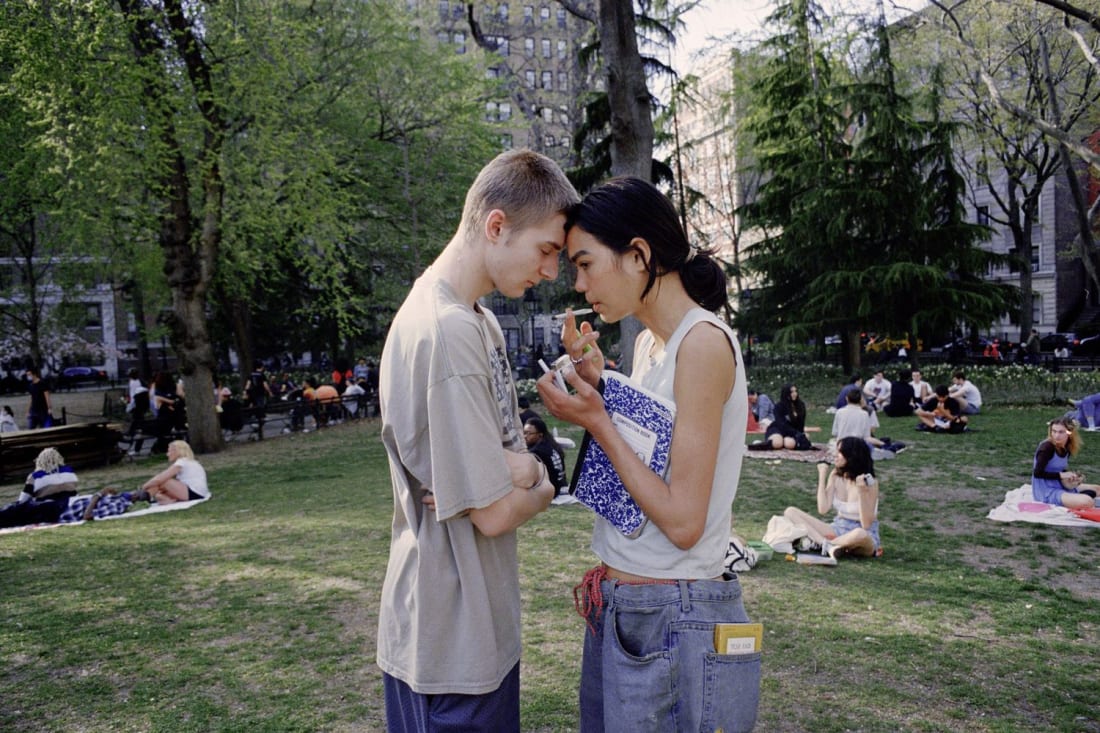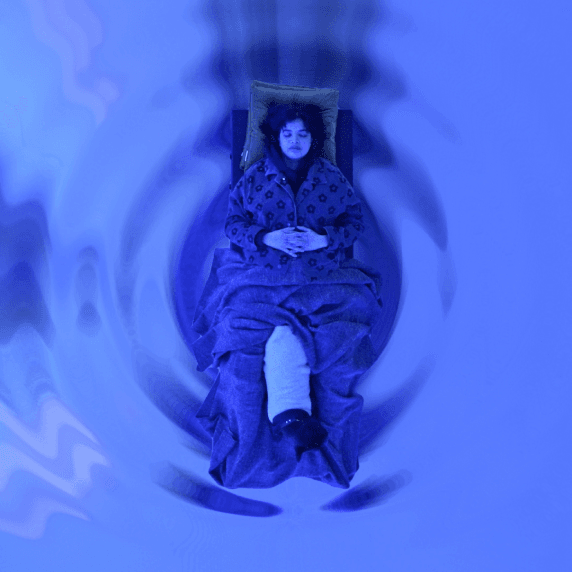woo reviews: kundalini
Team woo tried kundalini yoga: here we share just about everything we've learned
Team woo tried kundalini yoga: here we share just about everything we've learned
Obviously, you’ve heard of yoga: the practice tracing back to ancient India which revolves around exercises designed to benefit mental, physical and spiritual health. As you also probably know, there are plenty of different types of yoga - some of the best known being ashtanga, vinyasa, hatha and bikram yoga. Kundalini is a lesser-known form of yoga in the western world, but it is a particularly sacred practice within yogic traditions.
Here’s what to know about kundalini and what it feels like to try it out for the first time.
What is kundalini yoga?
Kundalini yoga is closely associated with Yogi Bhajan, a controversial yoga guru who was born in modern-day Pakistan. Bhajan popularised kundalini yoga in the West in the 1960s, but its roots stretch back far further than that. Kundalini - and techniques for unlocking this energy, that can be interpreted as references to kundalini yoga - are mentioned in ancient Vedic texts from 1,000 B.C that are sacred in Hinduism.
It has a very specific purpose and that’s to activate the kundalini energy, located at the bottom of every individual's spine. This energy is believed to be a divine feminine energy which lies dormant for many: the purpose of kundalini yoga is to awaken that energy and allow it to flow through the chakras.
The chakras are an ancient energy system, also mentioned in the Vedas. The word "chakra", derived from Sanskrit, means "wheel" and the chakras are thought of as spinning wheels of energy which need to stay open and aligned in your body.
Finally, it's worth noting that kundalini yoga focuses a lot on grounding and encourages you to let go of external distractions in order to sit with and reconnect with yourself.
Kundalini awakening
One of the main reasons to practise kundalini yoga is the potential of a kundalini awakening: spiritual enlightenment which will transform your life. It's essentially an energetic upgrade where you might feel more focussed, more creative, have more compassion and empathy and feel like your consciousness has expanded.
For some, however, it can be marked by a difficult transition involving a change of identity or difficulty sleeping. Symptoms that a kundalini awakening is underway may include shaking or spasms, a feeling of sensory overload, or intense feelings of hot or cold. Only occasionally does this awakening happen spontaneously: most of the time it is the result of a long spiritual practice.
Kundalini yoga components
Kundalini yoga incorporates a range of activities which may include chanting, sounds, singing, breathing exercises, meditation and various stances. The typical running order of a kundalini yoga class will go something like this:
- Opening chant.
- Pranayama (breathing exercises) and an exercise to warm up and stretch your spine to avoid injury.
- A sequence of postures, pranayama, mudras (hand positions), sounds, and meditation. This is called a kriya.
- A period of relaxation to help you recover from the kriya.
- Meditation.
- Closing chant.
continue watching...
Kundalini yoga: what it’s really like
So now you know about some of the theory behind kundalini yoga, it’s time to try it out.
You can search online for kundalini yoga classes near you in order to give the practice a shot in your own time and in your local area. I took part in a session as part of a day-long #gifted wellness immersion at the culture space Limewharf in London’s Cambridge Heath.
Organised by sound meditation teachers Elizabeth Broderick and Tamara Klien, the day combined a Liba lightbath, gong baths, meditation, cacao rituals and (of course) kundalini yoga. The kundalini session was led by Jayne Ellis, the founder of HighTimes Yoga and while I could tell you about all the programming from the day, we’re going to focus on the kundalini yoga session for obvious reasons.
So: kundalini yoga. To begin the practice, Ellis introduced herself and made sure we all had a coiled mat to sit on to give extra support. Afterwards, she led us into a warmup, making sure that our spine was good and warm so we didn’t give ourselves any nasty injuries. Since the majority of the class hadn’t done any kundalini yoga before, she also spent a bit of time explaining what we were in for and talking about the theory behind the practice - putting us all at ease.
We launched into some chants, repeating words and phrases after our teacher. While at times we were making some mistakes and not quite pronouncing things in the right way, it eventually became easier and more fluid - and the room filled up with the collective sound of our voices chanting, however clumsily, in unison.
Afterwards, we then transitioned to the next part of the class: pranayama, or breath control. We were encouraged to take quick breaths in and out through the nose (without any pause between), with our teacher emphasising that the length of the inhale and the exhale should be the same: this is called breath of fire. I found this style of intentional rather than intuitive breathing a bit of a tricky adjustment and realised I could quite easily fall out of pace with the rest of the class if I let my mind wander.
"I easily fell out of pace with the rest of the class when I let my mind wander"
Then we segued into different stances, some of which will be familiar to people who’ve already tried yoga. Cobra, lotus and archer stances are common in kundalini yoga and the kriya stage of the class was the most similar to more mainstream forms of yoga I have tried in the past, like vinyasa or bikram. Here, it became easier to tell who in the class had some form of yoga background - I was by far one of the least experienced.
After the stances, we engaged in a process of shaking out our bodies - which many seemed to approach with hesitation. Thankfully we were asked to close our eyes in order to make sure we didn’t feel self-conscious and to move freely on the spot as a way of releasing any negative or blocked energy. It was hard not to get a headache after all this jumping about but I decided to commit to the moment and it felt good to move without feeling overly confined or constrained - especially after the more technical kriya part of the class.
All this movement was followed by a short warm-down in the studio where we opened our eyes, walked around the room and made eye contact with the other students there for the day. Some embraced the invitation to connect, while others looked a bit more sheepish.
"One of the students next to me fell asleep and let out soft snores"
Following this meet and greet interlude, we were asked to lie down on our mats, close our eyes and cover ourselves with a blanket. The atmosphere in the room was quite blissful after all the energy release, which led to one of the students next to me falling asleep and letting out soft snores. She was still sleeping when the teacher told us we were moving onto one of the final components of the class: meditation.
This was a struggle for me. I’m always thinking a lot and daydreaming and don’t have amazing impulse control. However, it helped that I was a bit tired from the movement section of the class and was feeling really relaxed at this point. I lost track of how many minutes went by and then it was suddenly time for a closing chant to finish off the session.
Afterwards, I felt space-y for a few hours due to all the breathing exercises and the shaking, and was a bit sore the next day. It was great to try a different style of yoga, especially one with such deep cultural roots, but I wish I was a bit more experienced in breathwork and meditation in order to make the most of the class.
The verdict
From the above, you may have gathered that kundalini yoga is one of the more spiritual yoga practices - and you would be right. If you're a Yoga With Adrienne fan who's mostly interested in the physical or de-stressing benefits of yoga, but aren't interested in the spiritual, cultural or religious aspects, then kundalini yoga might not be for you.





















